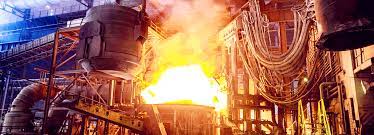India’s steel industry currently finds itself in a stressful predicament. Already reeling from cheap steel imports, the country is now even more worried about a surge of Chinese imports following the imposition of fresh tariffs on Chinese steel by U.S. President Joe Biden. Alongside the U.S., India and many other countries around the world have long desired a more “level playing field” for the trade of steel, aluminum, and other metals. However, these new steel tariffs may actually make that more challenging.
How U.S. Steel Tariffs Affect the Indian Steel Industry
As MetalMiner previously reported, India concluded the financial year 2023-2024 as a net importer of finished steel, causing concern among industry experts nationwide. Now, recent moves from the U.S. could compound the situation for the Indian steel industry. According to a statement issued by the White House, the tariff rate on certain steel and aluminum products under Section 301 will go up from 0-7.5% to 25% in 2024. Many now fear that at least some portion of the steel earmarked for the U.S. will end up diverted to Indian shores.
Steel experts in India are now trying to figure out how this shift in steel imports could influence prices in that country. Alok Sahay, Secretary General of the Indian Steel Association (ISA), a representative body of Indian steelmakers, told Business Standard that India remains vulnerable to price surging and predatory imports. He pointed out that India already faces a significant threat from such imports, as all major steel-consuming economies were now in the process of stopping the entry of steel from over-producing countries like China.
Despite some signs of economic recovery in China, weak domestic demand for steel continues to prompt the country to sell off its surplus stocks at competitive rates. This not only includes selling stock to Indian buyers, but also to countries like the U.S. as well as parts of Eastern Europe. With the new U.S. tariffs kicking in, logic dictates that the situation may only get worse as Chinese steelmakers try and find alternate markets to dump their steel. Steel industry fluctuations like these are covered extensively in MetalMiner’s free weekly newsletter.
Chinese Exports Keep Increasing
A look at recent trade record books for China shows an upward graph in terms of steel exports. In April this year, steel exports remained above the nine million tons mark. As with India, this “excess” steel continues to add to trade tensions between China and other nations. For instance, the European Commission recently initiated an investigation into flat-rolled iron or steel products coated with tin from China to determine if the prices are excessively low. This anti-dumping investigation stems directly from a complaint by Eurofer, the European Steel Association, which oversees trade policy in the 27-nation EU.
Despite protests by steelmakers from multiple countries, there seem to be no signs of steel production in China slowing down for now. Evidence for this includes the high monthly import figures of iron ore, a critical raw material in the making of steel. In fact, according to this report, ore imports already hit the 100 million tons mark for the third time this year.
However, some analysts remain optimistic that China’s steel exports may decrease in the coming months due to a crackdown on the tax evasion boosting overseas sales. If this fails to occur, it’s possible the country might manufacture more than 100 million tons of steel this year. Naturally, the reduced domestic consumption means a large chunk of this steel will end up exported elsewhere.
What is India Doing?
Indian finished steel imports totaled 8.3 MT in the last fiscal year. This represents an increase of 38.1% from a year earlier. Concerned by the rising imports needed to meet India’s growing steel consumption, steel mills are urging the Indian Government to intervene and implement safeguard measures.
The association representing steel companies previously requested similar interventions. However, the Ministry of Steel has yet to respond to these demands. One reason for that could be because India is in the middle of central elections. Until a new government is in place, not little will likely be done to protect Indian steel mills.

 Iran Energy News Oil, Gas, Petrochemical and Energy Field Specialized Channel
Iran Energy News Oil, Gas, Petrochemical and Energy Field Specialized Channel



